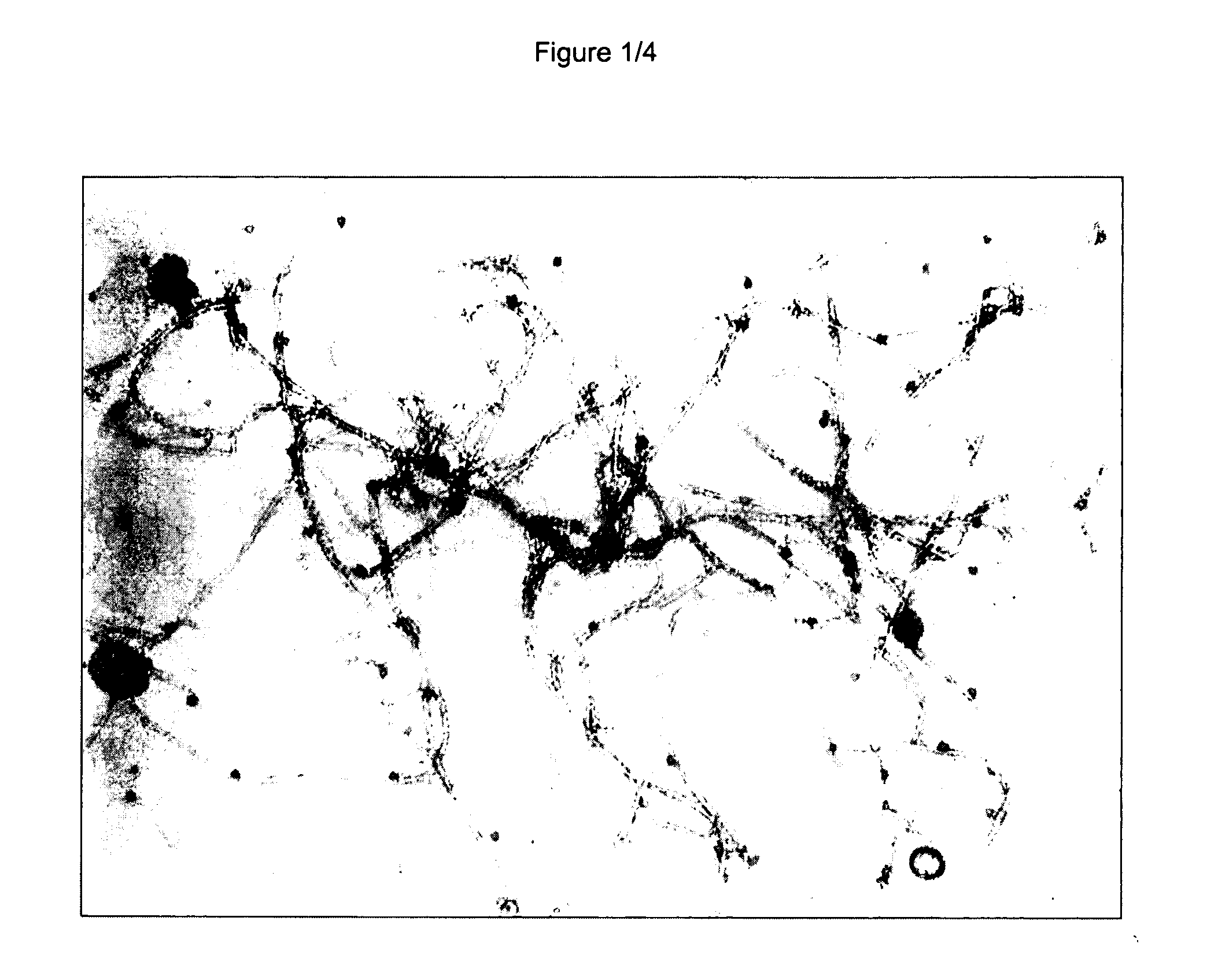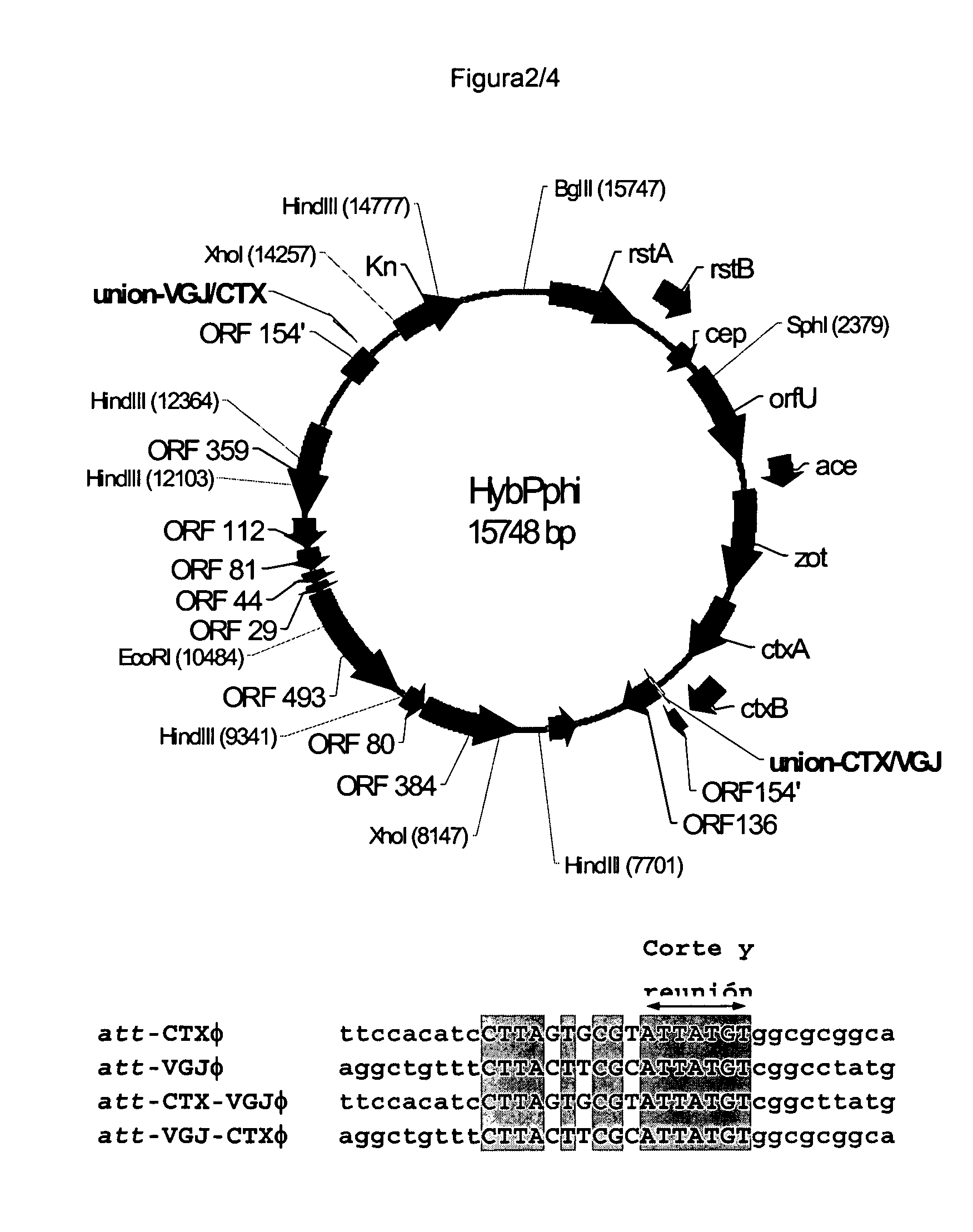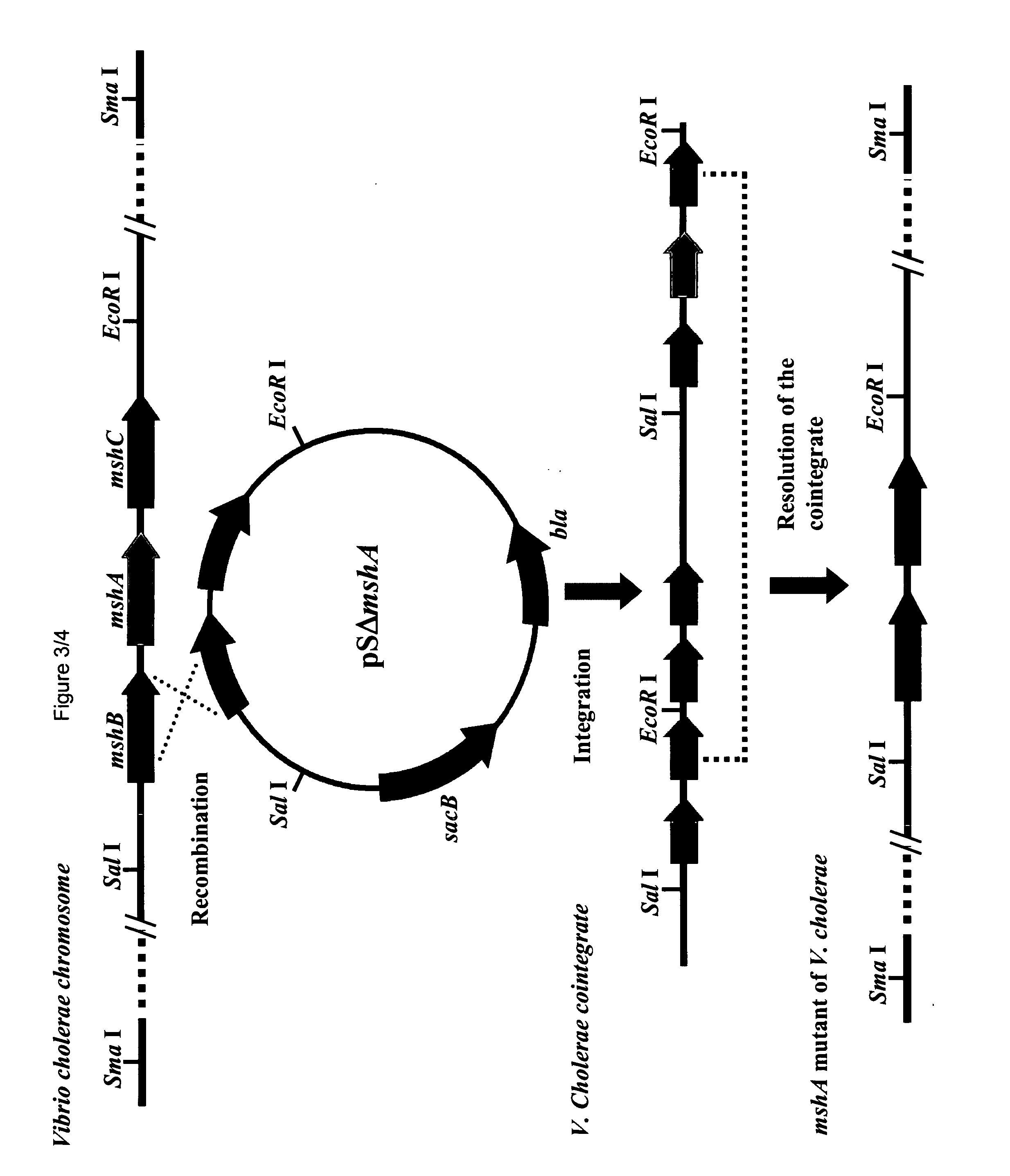Attenuated strains of vibrio cholerae with improved biological safety features in freeze dried form for oral vaccination
- Summary
- Abstract
- Description
- Claims
- Application Information
AI Technical Summary
Benefits of technology
Problems solved by technology
Method used
Image
Examples
example 1
Discovery and Characteristics of the VGJφ Phage
[0056] VGJφ was discovered as an extrachromosomal transmissible element in total DNA preparations from Vibrio cholerae SG25-1, an O139 strain isolated in Calcuta India, 1993 and kindly donated by professor Richard A. Finkelstein. Simple experiments showed the transmissibility of this element. Free-cell culture supernatants of the donor strain, carrying the element, was grown in standard condition like LB media (NaCl 10 g / l, triptone 10 g / l and yeast extract 5 g / l) and was able to transfer to a receptor strain that does not contain any extrachromosomal element, one genetic element of the same size and restriction map that the one was present in the donor strain. The property of transmission without the direct contact between donor-receptor is typical in phages.
Infection Assays:
[0057] Donor strains were grown until optical density to 600 nm equal 0.2. One aliquot from the culture was filtered through a 0.22 μm- pore-size filter to rem...
example 2
Identification of VGJΦ Receptor
[0073] Filamentous phages generally use type IV pili as receptor to infect their hosts. Previously reported V. cholerae-specific filamentous phages use TCP or MSHA pili as receptor. Therefore, two mutants of the El Tor strain C6706 for these pili, KHT52 (ΔtcpA10) and KHT46 (ΔmshA), were used to identify if any of them was the receptor of VGJΦ. While parenteral strain C6706 and its TCP-mutant KHT52 were sensitive to the infection with VGJΦ, the MSHA-mutant KHT46 was fully resistant to the phage, indicating that MSHA was the receptor of VGJΦ. Complementation of strain KHT46 with wild type mshA structural gene (from parental C6706) carried on plasmid pJM132 restored phage sensitivity, confirming that MSHA is the receptor for VGJΦ. The resistance or sensivity to VGJΦ was evaluated by the absence or presence of replicative form in cultures of receptor strain analyzed after the infection assay.
[0074] To give a numerical titer of the particles which are tra...
example 3
Mobilization of CTXΦ, its Mechanism and Reversion to Virulence
[0082] Infection of V. cholerae O1 or O139 strains that carry an active CTXΦ phage with VGJΦ gives rise to the production of infective particles that bear the CTXΦ phage genome inserted in the genome of VGJΦ. These particles of hybrid phages have been designated HybPΦ. The HybPΦ titers were evaluated by means of the use of a hybrid phage, which carries a kanamycin marker (HybPΦ-Kn), employing different strains as indicators. The resultant titers are shown in Table 1.
[0083] HybPΦ-Kn was purified starting from preparations derived of 569B (HybPΦ-Kn) strain and the single strand was sequenced to determine the junctions between CTXΦ and VGJΦ. The cointegrate structure is graphically shown in the FIG. 2 and the nucleotide sequences of the junctions among both sequences, what explains the mechanism by which VGJΦ transduces CTXΦ toward other V. cholerae strains. HybPΦ-Kn enters to V. cholerae using the same receptor that VGJΦ,...
PUM
| Property | Measurement | Unit |
|---|---|---|
| Fraction | aaaaa | aaaaa |
| Fraction | aaaaa | aaaaa |
| Fraction | aaaaa | aaaaa |
Abstract
Description
Claims
Application Information
 Login to View More
Login to View More - R&D
- Intellectual Property
- Life Sciences
- Materials
- Tech Scout
- Unparalleled Data Quality
- Higher Quality Content
- 60% Fewer Hallucinations
Browse by: Latest US Patents, China's latest patents, Technical Efficacy Thesaurus, Application Domain, Technology Topic, Popular Technical Reports.
© 2025 PatSnap. All rights reserved.Legal|Privacy policy|Modern Slavery Act Transparency Statement|Sitemap|About US| Contact US: help@patsnap.com



